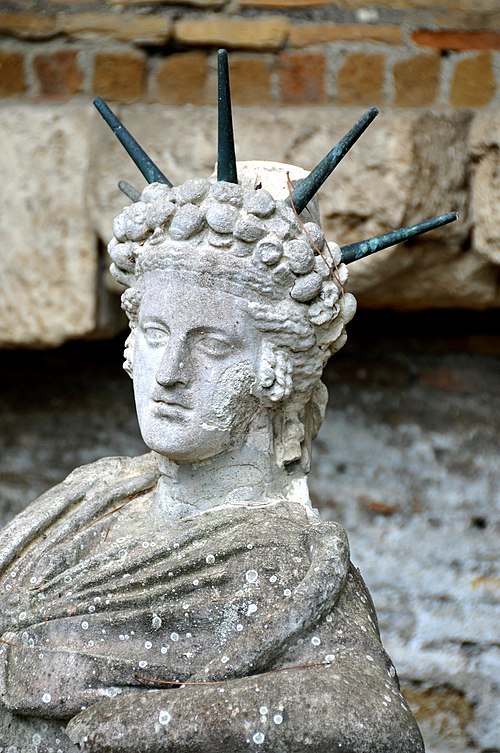
- Personne
Attis (/ˈætɪs/; Greek: Ἄττις, also Ἄτυς, Ἄττυς, Ἄττης) was the consort of Cybele, in Phrygian and Greek mythology.
His priests were eunuchs, the Galli, as explained by origin myths pertaining to Attis castrating himself. Attis was also a Phrygian vegetation deity. His self-mutilation, death, and resurrection represents the fruits of the earth, which die in winter only to rise again in the spring.
According to Ovid's Metamorphoses, Attis transformed himself into a pine tree.
History
An Attis cult began around 1250 BCE in Dindymon (today's Murat Dağı of Gediz, Kütahya, Turkey). He was originally a local semi-deity of Phrygia, associated with the great Phrygian trading city of Pessinos, which lay under the lee of Mount Agdistis. The mountain was personified as a daemon, whom foreigners associated with the Great Mother Cybele.
In the late 4th century BCE, a cult of Attis became a feature of the Greek world. The story of his origins at Agdistis recorded by the traveller Pausanias have some distinctly non-Greek elements.
Pausanias was told that the daemon Agdistis initially bore both male and female sexual organs. The Olympian gods feared Agdistis and they conspired to cause Agditis to accidentally castrate themselves, ridding themselves of their male organs. From the hemorrhage of Agdistis germinated an almond tree. When the fruits ripened, Nana, daughter of the river Sangarius, took an almond, put it in her bosom, and later became pregnant. Later, Nana abandoned baby Attis.
The infant was tended by a he-goat. As Attis grew, his long-haired beauty was godlike, and his parent, Agdistis (as Cybele) then fell in love with him. But Attis' foster parents sent him to Pessinos, where he was to wed the king's daughter.
According to some versions the king of Pessinos was Midas. Just as the marriage-song was being sung, Agdistis / Cybele appeared in her transcendent power, and Attis went mad and castrated himself under a pine. When he died as a result of his self-inflicted wounds, violets grew from his blood. Attis' father-in-law-to-be, the king who was giving his daughter in marriage, followed suit, prefiguring the self-castrating corybantes who devoted themselves to Cybele. The heartbroken Agdistis begged Zeus, the Father God, to preserve Attis so his body would never decay or decompose.
At the temple of Cybele in Pessinus, the mother of the gods was still called Agdistis, the geographer Strabo recounted.
As neighbouring Lydia came to control Phrygia, the cult of Attis was given a Lydian context too. Attis is said to have introduced to Lydia the cult of the Mother Goddess Cybele, incurring the jealousy of Zeus, who sent a boar to destroy the Lydian crops. Then certain Lydians, with Attis himself, were killed by the boar. Pausanias adds, to corroborate this story, that the Gauls who inhabited Pessinos abstained from pork. This myth element may have been invented solely to explain the unusual dietary laws of the Lydian Gauls. In Rome, the eunuch followers of Cybele were called galli.
Julian describes the orgiastic cult of Cybele and its spread. It began in Anatolia and was adopted in Greece, and eventually Republican Rome; the cult of Attis, her reborn eunuch consort, accompanied her.
Numéros d'identification
- VIAF ID (30151776734018010484)



















